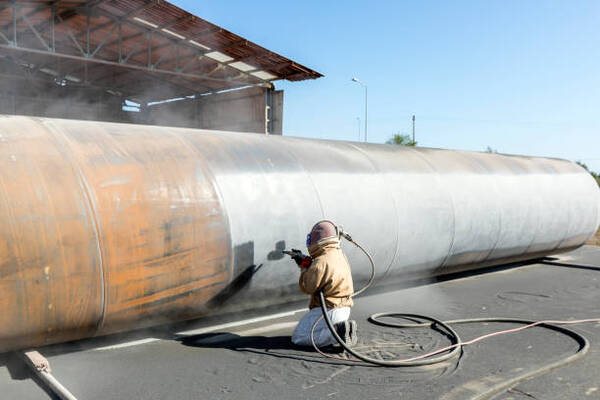- 1-905-452-8193
- Contact Us
- Member Login
- Get Listed Today
- 220,911 members

Heat-resistant coatings and intumescent coatings are two types of protective paint used for a variety of applications. The main difference between these moisture cured urethanes is the way they react to heat. Heat-resistant coatings help protect surfaces from high temperatures by forming a protective barrier, while intumescent coatings expand in size when exposed to fire or intense heat, creating an insulating layer that helps prevent the spread of fire and smoke.
Heat-resistant coatings are typically made up of polymers, resins, and other materials that can withstand extreme temperatures ranging from -90°F to over 500°F (-68°C-260°C). These coatings are found in paints, primers, and varnishes used on everything from aeroplanes to kitchenware. They are often used on equipment and surfaces that may be exposed to extreme temperatures, such as industrial ovens and exhaust systems.
Intumescent coatings, on the other hand, are designed to expand when subjected to high levels of heat or fire. The coating is composed of a combination of resins, polymers and usually an active agent like ammonium phosphate. When exposed to intense heat from a flame or electric spark, the resin expands up to 10 times its original size creating a layer of insulation that helps protect underlying surfaces from damage due to high temperatures. Intumescent coatings can also provide soundproofing by blocking the transmission of noise waves through walls and ceilings.
The following list explains the key differences between the two coating materials.
Formulation
Heat-resistant coatings are generally applied as paints or varnishes with chemical solvents, while intumescent coatings are made out of a mixture of inert materials such as vermiculite, silicates and other minerals bound together with a binder resin or adhesive.
Temperature resistance
Heat-resistant coatings can resist high temperatures up to 500F, while intumescent coatings can withstand temperatures up to 1700F.
Durability
Heat-resistant coatings are quite durable and can last for years with proper application and maintenance, while intumescent coatings tend to degrade quickly when exposed to heat or other environmental factors.
Cost
Heat-resistant coatings are generally more cost-effective than intumescent coatings, due to the complexity of the latter’s formulation process.
Application
Heat-resistant coatings are usually applied using a brush, roller or sprayer depending on the surface being protected, whereas intumescent coating is normally used as a paste that needs to be mixed with a solvent before it can be applied onto substrates.
Aesthetics
Heat-resistant coatings usually provide a glossy finish that enhances the appearance of the substrate, while intumescent coatings tend to appear dull and unattractive due to their chalky texture.
Flexibility
Heat-resistant coatings are more flexible in terms of being able to withstand slight surface movements without cracking or peeling, whereas intumescent coatings become brittle when exposed to heat, causing them to crack or flake off easily if there is even minor movement in the surface.
Coverage rate
Heat-resistant coatings can be applied up to 3-4 mils per gallon, while intumescent coating requires a much heavier application rate of between 5-9 mils per gallon.
VOCs
Heat-resistant coatings typically contain volatile organic compounds, which evaporate after application and can be harmful to humans and the environment, while intumescent coatings are free of hazardous solvents.
Fire protection
Heat-resistant coatings provide minimal fire protection, whereas intumescent coating expands when the substrate is exposed to high temperatures, sealing off any combustible material from the heat and providing an extra level of fire protection for the underlying surface.
Choosing between heat-resistant and intumescent coatings will depend on your specific application needs as well as budget considerations. It’s important to weigh all factors carefully before deciding to ensure that you get the most out of your coating investment.
Both types of coating can be used for a variety of applications and it’s important to choose the right one depending on what kind of protection you need. You should also consider any regulations that may be in place within your industry before you make a decision. If you have any questions about either type of coating, contact a professional who specializes in protective paints and coatings.
